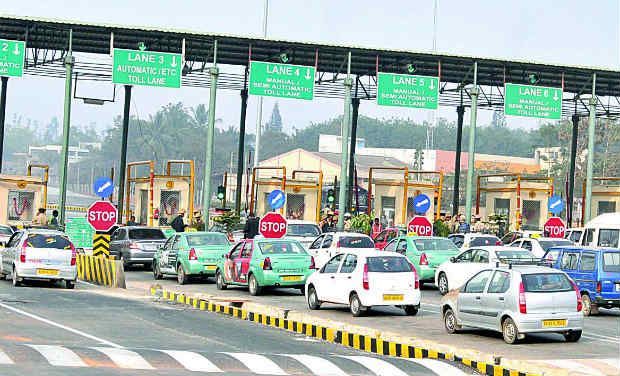According to media reports, the National Highways Authority of India (NHAI) is planning to eliminate toll plazas on National Highways across India. NHAI plans to replace toll plazas and introduce On-board unit devices for toll collection. It is a great initiative on the part of the NHAI, as it will surely prove to be a significant step forward in reducing the turnaround time at plazas and also help in managing the jams.
As per the report, an On-board device will be installed in the vehicle that will work on Radio frequency (RF) technology. RF is wireless technology and when the vehicle passes through the toll plaza, a certain amount will be deducted from the commuter’s account automatically. A noteworthy fact is that the commuters need to have a prepaid toll account in order to avail of this facility.
One such project has already been put into motion on a pilot basis on the Delhi-Mumbai highway. According to the Transport and Highways Ministry, if the project turns out to be a success, NHAI may extend it as a pan India project. The report further stated that in September last year; the Ministry of Road Transport and Highways reported that the use of FASTAG (electronic toll collection system) devices has resulted in a significant growth of revenue.
Not to forget that since coming to power in 2014, the Modi government made significant investments in public transport, highway construction, railways, and water transport and air connectivity. The Modi government has built 28,531 km of national highways in its four years since 2014-15, which is 73 percent more against the 16,505 kms achieved by the Manmohan Singh government in four years till 2013-14.
A number of visionary projects like Bharatmala 2.0, Char Dham Mahamarg Vikas Pariyojana and others are lined up and will be completed soon. Under Bharatmala 2.0, a visionary project of the Modi government’s focused on expressways, the government plans to build 4,000 km of Greenfield roads. The expressways will allow uninterrupted traffic flow and connect various cities including Varanasi-Ranchi-Kolkata, Indore-Mumbai, Bengaluru-Pune and Chennai-Trichy. The Bharatmala Project is a comprehensive road project to connect the various essential cities and town in the country as well as passages to the outside world.
Earlier, in 2016, the Modi government laid the foundation stone of the Char Dham Mahamarg Vikas Pariyojana; a 900 KM long national highway project to connect all the four sacred Hindu pilgrimage sites. Under this project, the construction of new tunnels, bridges, and flyovers are proposed on the roads linking the Char Dham. It also included the broadening of existing highways. A total of 12,000 crores were budgeted for this project.
In reality, when it comes to technology centric governance and innovation based infrastructure development; the Modi government stood a clear winner. Since 2017, the Modi government has been conducting the ‘Smart India Hackathon’ focused on solving problems of various Ministries of the Government of India with the help of modern technology like Artificial Intelligence (AI), Internet of Things (IOT) and Machine Learning. During the time of previous governments, railways, roads and airstrips were more of a poll time gimmick. These were things that the ministers and the government had limited to their own political constituencies strictly for vote bank politics, but the policy of the Modi government has written a fresh story about India’s inclusive growth.
